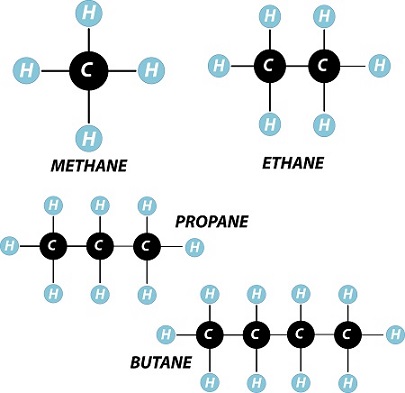Webster's defines a hydrocarbon as "an organic compound containing only carbon and hydrogen". Natural gas is a mixture of hydrocarbons, the precise composition of which varies, which generally consists primarily of Methane (CH4) along with smaller amounts of Ethane (C2H6), Propane (C3H8), Butane (C4H10) and other heavier hydrocarbons as well as contaminant elements (such as water, nitrogen, and others). The specific concentration of elements and contaminants vary by geological source but Methane is always the principal component (generally accounting for 70% to 95%).Webster's defines a commodity as "a good or service whose wide availability typically leads to smaller profit margins and diminishes the importance of factors other than price".To be considered a commodity, a good or service must generally meet three tests:

There are many buyers and sellers of natural gas, including:
Many of these market players will need natural gas on an ongoing basis. And, as storage capacity is limited, they arrange to buy and sell their natural gas for future delivery. For example, a natural gas utility or large industrial doesn't wait to arrange for their natural gas supplies but rather contracts in advance to ensure their access to supply and lock down operating costs. Moreover, they enter into these forward contracts with a number of suppliers to reduce their supply risk should any one supplier not be able to perform. Likewise, producers and wholesalers prefer to arrange for delivery of natural gas on an ongoing basis to ensure they have a market for their supply.
The fungibility issue is met, albeit a bit less straightforwardly. Natural gas quality can vary by pipeline. Actually, "quality" is defined by each pipeline within their tariff (Tariffs are documents filed with regulators detailing the pipeline's terms and conditions of service and associated prices for various customer classes). Each pipeline's definition of quality varies based on the geographic areas in which they are situated since the pipelines were designed for the gas they would transport. Each pipeline needs the source natural gas they transport to remain gaseous at the pipeline's typical operating pressure and temperature. The inclusion of lower quality gas (e.g. containing additional heavy hydrocarbons, etc.) may cause components in the gas to liquify, reducing a pipeline's performance and life. As such, the FERC leaves it to the pipelines to define quality with the FERC addressing quality disputes on a case by case basis. Even still, "pipeline quality" gas can generally be defined as natural gas in the range of 99.5% to 100.5% of the BTU of pure methane which is reasonably free of contaminants. As such, issues of quality, and even interchangeability between pipelines, are relatively rare in the US. However, this need not always be the case. Issues became much more common in 2006 when a spike in natural gas prices without a concomitant rise in the price of related hydrocarbons led producers to leave the heavier hydrocarbons in their gas rather than process them out for separate sale (an issue which resolved itself when shale extraction brought down the price for natural gas).
